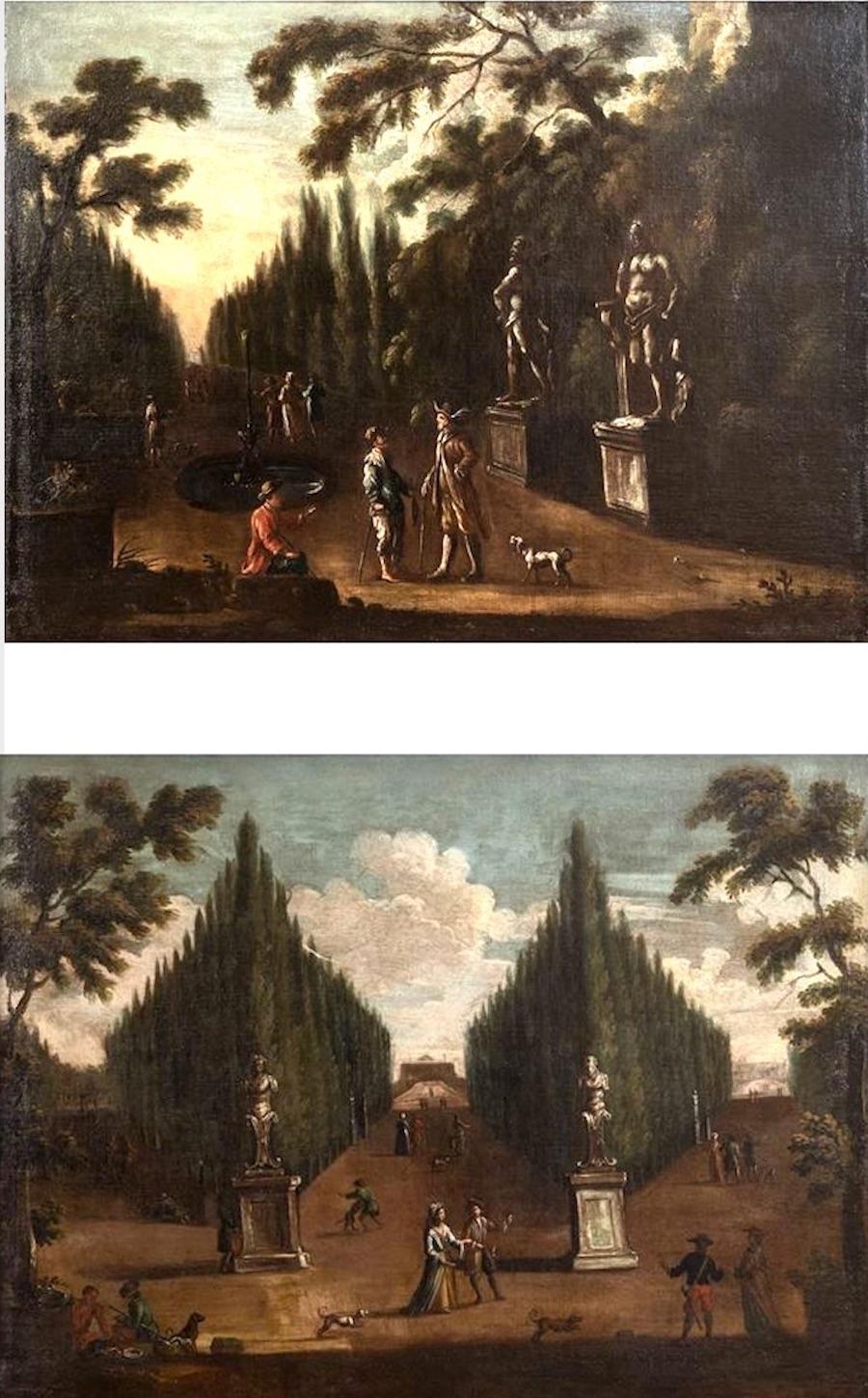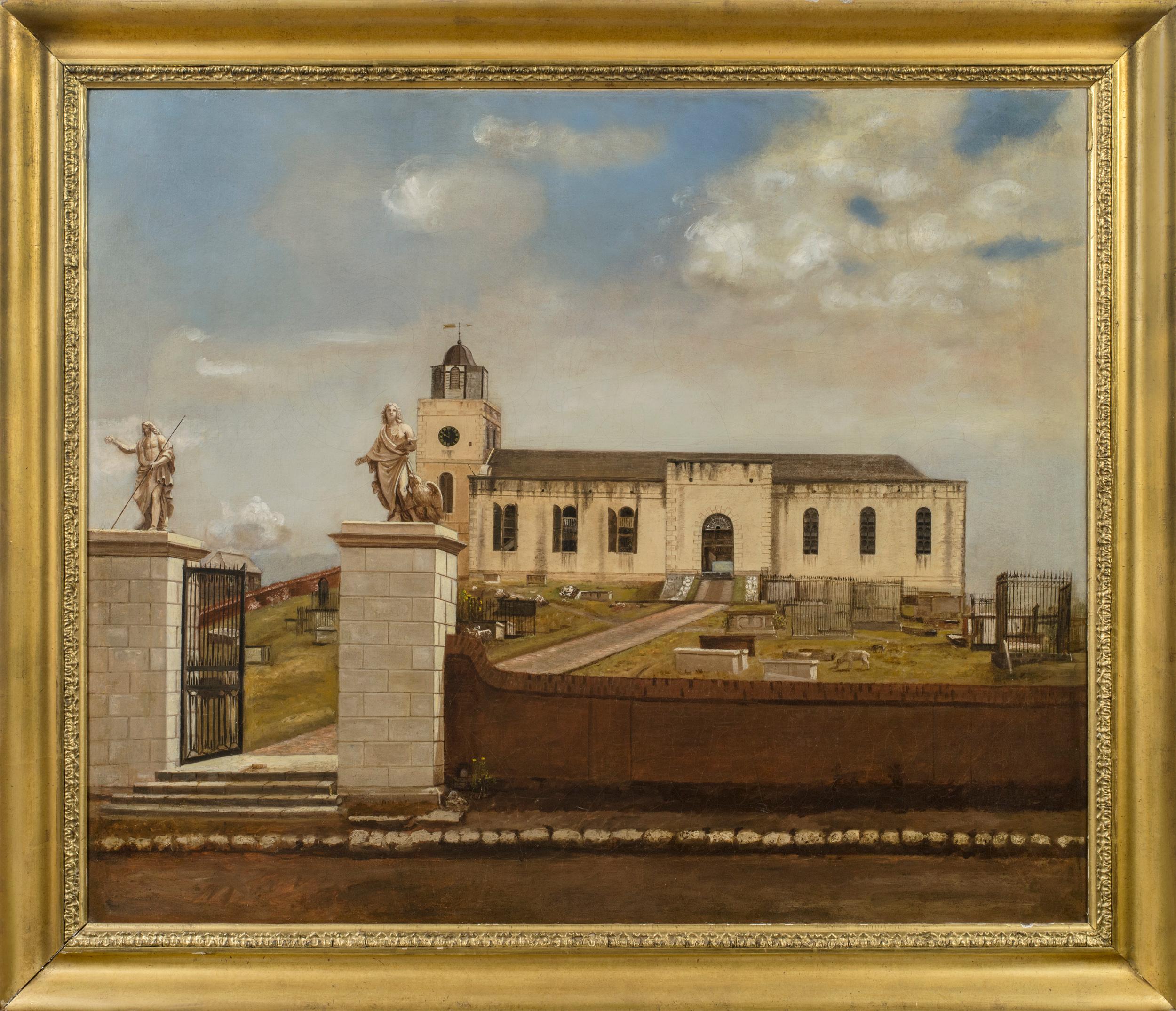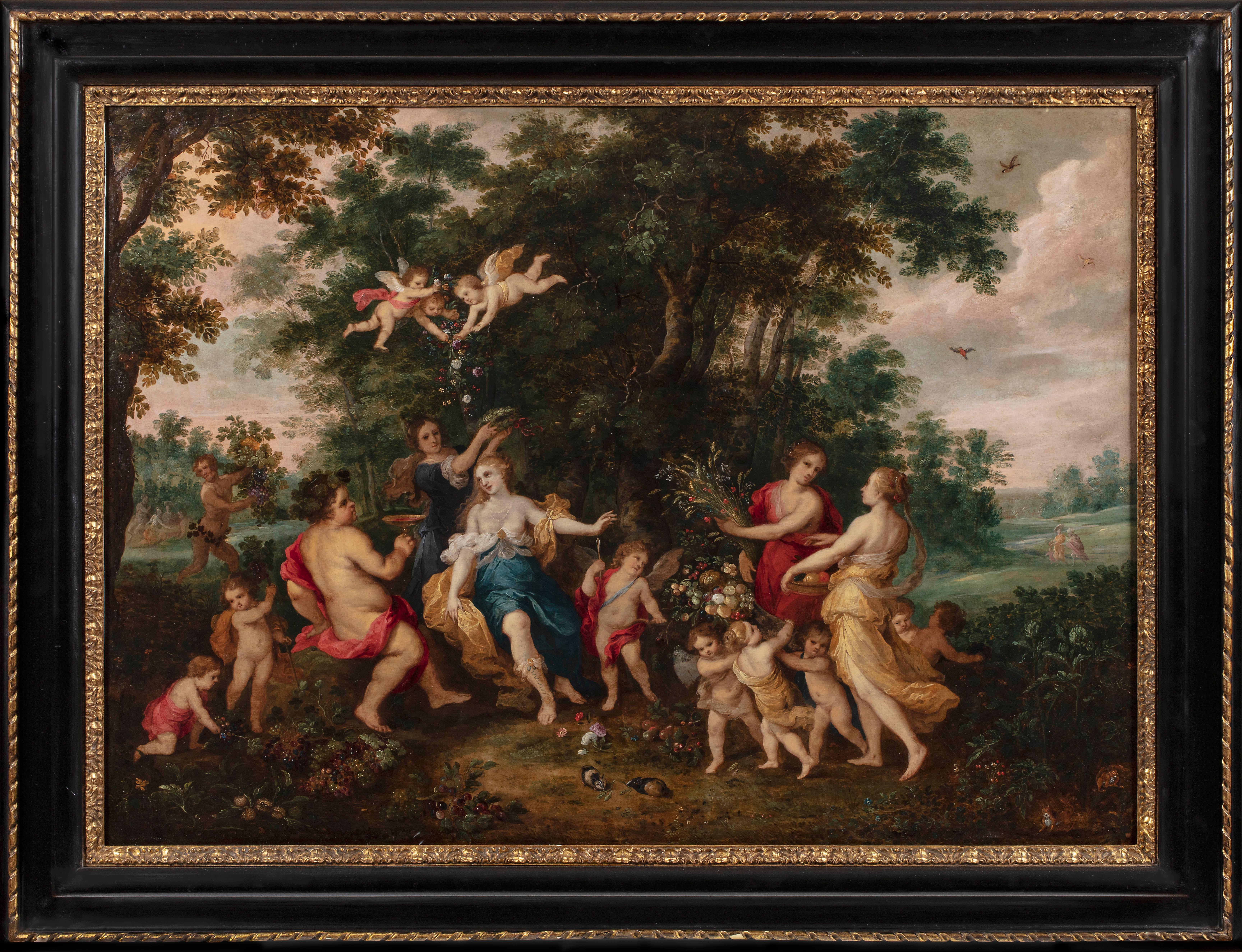Items Similar to Pair of Italian 18' century Paintings with Gardens
Want more images or videos?
Request additional images or videos from the seller
1 of 12
UnknownPair of Italian 18' century Paintings with Gardens 1740
1740
About the Item
Pair of Italian 18' century paintings , oil on canvas with Venetian Palace gardens , antiques sculptures and various figures .
Measurements with frame cm 75 x101
- Creation Year:1740
- Dimensions:Height: 40.16 in (102 cm)Width: 29.53 in (75 cm)Depth: 1.97 in (5 cm)
- Medium:
- Movement & Style:
- Period:
- Condition:
- Gallery Location:Rome, IT
- Reference Number:1stDibs: LU1004112865922
About the Seller
5.0
Vetted Seller
These experienced sellers undergo a comprehensive evaluation by our team of in-house experts.
1stDibs seller since 2018
25 sales on 1stDibs
Typical response time: 2 hours
- ShippingRetrieving quote...Ships From: roma, Italy
- Return PolicyA return for this item may be initiated within 2 days of delivery.
More From This SellerView All
- Pair of Italian 18' century Paintings with GardensLocated in Rome, ITPair of Italian 18' century paintings , oil on canvas with Venetian Palace gardens , antiques sculptures and various figures . Measurements with f...Category
Mid-18th Century Old Masters Landscape Paintings
MaterialsOil
- 19th Century Roman Landscape oil on canvas with Giltwood FrameLocated in Rome, ITAmaizing 19' century Roman landscape depicting a part of Villa Borghese with Trinità dei Monti. With a finely carved gilt wood coeval frame. Measurements with frame cm 65 x78 wit...Category
19th Century Old Masters Landscape Paintings
MaterialsOil
- Important 17' Century Mythological Painting Diana and Actaeon Oil on CanvasBy Giovanni Battista ViolaLocated in Rome, ITFascinating mythological story of Diana and Actaeon can be found in Ovid’s Metamorphoses. Very important provenance from a royal collection. Fabulous finely carved gilt wood coeval frame . Giovanni Battista Viola...Category
17th Century Baroque Landscape Paintings
MaterialsOil
- Important 17' Century Mythological Painting Diana and Actaeon Oil on CanvasBy Giovanni Battista ViolaLocated in Rome, ITFascinating mythological story of Diana and Actaeon can be found in Ovid’s Metamorphoses. Very important provenance from a royal collection. Fabulous finely carved gilt wood coeval frame . Giovanni Battista Viola...Category
17th Century Baroque Landscape Paintings
MaterialsOil
- Roma via Appia Painting oil on Canvas By Ruspini RandolfoBy Ruspini RandolfoLocated in Rome, ITRoma via Appia Painting oil on Canvas By Ruspini Randolfo .1930-40 With a Giltwood frame of the same period.Category
Early 20th Century Landscape Paintings
MaterialsOil
- Important 17' Century Mythological Painting Diana and Actaeon Oil on CanvasBy Giovanni Battista ViolaLocated in Rome, ITFascinating mythological story of Diana and Actaeon can be found in Ovid’s Metamorphoses. Very important provenance from a royal collection. Fabulous finely carved gilt wood coeval...Category
17th Century Baroque Landscape Paintings
MaterialsOil
You May Also Like
- A WolfLocated in New York, NYProvenance: The Marchesi Strozzi, Palazzo Strozzi, Florence Sale, Christie’s, London, May 20, 1993, lot 315, as by Carl Borromaus Andreas Ruthart...Category
17th Century Old Masters Animal Paintings
MaterialsCanvas, Paper, Oil
- View of St. John’s Cathedral, AntiguaLocated in New York, NYProvenance: Robert Hollberton, Antigua, ca. 1841 Private Collection, New York The present painting depicts Old St. John’s Cathedral on the island of Antigua. The church was erected in the 1720s on the designs of the architect Robert Cullen. It measured 130 feet by 50 feet with north and south porches 23 x 20 ½ feet. The tower, 50 feet high with its cupola, was added in 1789. The church was elevated to the status of a cathedral, but disaster struck in the form of an earthquake that destroyed the building on 8 February 1843. A memorandum of that date relates the event: “On Wednesday, 8th February, 1843, this island was visited by a most terrific and destructive earthquake. At twenty minutes before eleven o’clock in the forenoon, while the bell was ringing for prayers, and the venerable Robert Holberton was in the vestry-room, awaiting the arrival of persons to have their marriage solemnized, before the commencement of the morning service, the whole edifice, from one end to the other, was suddenly and violently agitated. Every one within the church, after the first shock, was compelled to escape for his life. The tower was rent from the top to the bottom; the north dial of the clock precipitated to the ground with a dreadful crash; the east parapet wall of the tower thrown upon the roof of the church; almost the whole of the north-west wall by the north gallery fell out in a mass; the north-east wall was protruded beyond the perpendicular; the altar-piece, the public monument erected to the memory of lord Lavington, and the private monuments, hearing the names of Kelsick, Warner, Otley, and Atkinson, fell down piecemeal inside; a large portion of the top of the east wall fell, and the whole of the south-east wall was precipitated into the churchyard, carrying along with it two of the cast-iron windows, while the other six remained projecting from the walls in which they had been originally inserted; a large pile of heavy cut stones and masses of brick fell down at the south and at the north doors; seven of the large frontpipes of the organ were thrown out by the violence of the shock, and many of the metal and wooden pipes within displaced; the massive basin of the font was tossed from the pedestal on which it rested, and pitched upon the pavement beneath uninjured. Thus, within the space of three minutes, this church was reduced to a pile of crumbling ruins; the walls that were left standing being rent in every part, the main roof only remaining sound, being supported by the hard wood pillars.” The entrance from the southern side into the cathedral, which was erected in 1789, included two imposing statues, one of Saint John the Divine and the other of Saint John the Baptist in flowing robes. It is said that these statues were confiscated by the British Navy from the French ship HMS Temple in Martinique waters in 1756 during the Seven Years’ War and moved to the church. The statues are still in situ and can be seen today, much as they appeared in Bisbee’s painting, but with the new cathedral in the background (Fig. 1). Little is known of the career of Ezra Bisbee. He was born in Sag Harbor, New York in 1808 and appears to have had a career as a political cartoonist and a printmaker. His handsome Portrait of President Andrew Jackson is dated 1833, and several political lithographs...Category
19th Century Old Masters Landscape Paintings
MaterialsCanvas, Oil
- Allegory of AbundanceLocated in New York, NYPainted in collaboration with Hendrick van Balen (Antwerp, 1575 – 1632). Provenance: Private Collection, Uruguay, since the 1930s. The eldest son of Jan Br...Category
17th Century Old Masters Paintings
MaterialsCopper
- 18th Century Galanti Scenes Van Limborch Rest Hunting Oil on Canvas Green RedLocated in Sanremo, ITPair of oval paintings measuring 66 x 89 cm without frame and 90 x 115 cm with coeval frame depicting two gallant moments during a rest from hunting by painter Hendrik Van Limborch (...Category
1730s Old Masters Landscape Paintings
MaterialsCanvas, Oil
- Early oil depicting the Great Fire of LondonLocated in London, GBThe Great Fire of London in September 1666 was one of the greatest disasters in the city’s history. The City, with its wooden houses crowded together in narrow streets, was a natural fire risk, and predictions that London would burn down became a shocking reality. The fire began in a bakery in Pudding Lane, an area near the Thames teeming with warehouses and shops full of flammable materials, such as timber, oil, coal, pitch and turpentine. Inevitably the fire spread rapidly from this area into the City. Our painting depicts the impact of the fire on those who were caught in it and creates a very dramatic impression of what the fire was like. Closer inspection reveals a scene of chaos and panic with people running out of the gates. It shows Cripplegate in the north of the City, with St Giles without Cripplegate to its left, in flames (on the site of the present day Barbican). The painting probably represents the fire on the night of Tuesday 4 September, when four-fifths of the City was burning at once, including St Paul's Cathedral. Old St Paul’s can be seen to the right of the canvas, the medieval church with its thick stone walls, was considered a place of safety, but the building was covered in wooden scaffolding as it was in the midst of being restored by the then little known architect, Christopher Wren and caught fire. Our painting seems to depict a specific moment on the Tuesday night when the lead on St Paul’s caught fire and, as the diarist John Evelyn described: ‘the stones of Paul’s flew like grenades, the melting lead running down the streets in a stream and the very pavements glowing with the firey redness, so as no horse, nor man, was able to tread on them.’ Although the loss of life was minimal, some accounts record only sixteen perished, the magnitude of the property loss was shocking – some four hundred and thirty acres, about eighty per cent of the City proper was destroyed, including over thirteen thousand houses, eighty-nine churches, and fifty-two Guild Halls. Thousands were homeless and financially ruined. The Great Fire, and the subsequent fire of 1676, which destroyed over six hundred houses south of the Thames, changed the appearance of London forever. The one constructive outcome of the Great Fire was that the plague, which had devastated the population of London since 1665, diminished greatly, due to the mass death of the plague-carrying rats in the blaze. The fire was widely reported in eyewitness accounts, newspapers, letters and diaries. Samuel Pepys recorded climbing the steeple of Barking Church from which he viewed the destroyed City: ‘the saddest sight of desolation that I ever saw.’ There was an official enquiry into the causes of the fire, petitions to the King and Lord Mayor to rebuild, new legislation and building Acts. Naturally, the fire became a dramatic and extremely popular subject for painters and engravers. A group of works relatively closely related to the present picture have been traditionally ascribed to Jan Griffier...Category
17th Century Old Masters Landscape Paintings
MaterialsOil, Canvas
- View of the Grand Canal, a painting by William James, after CanalettoBy William JamesLocated in PARIS, FRAlthough we have little bibliographical information on William James, we know that he was trained by Canaletto during the painter's stay in England between 1746 and 1755. Although he may never have been to Venice, William James remained under the influence of his master for a long time and became known for his paintings inspired by Canaletto's artworks. In this painting, William James is inspired by one of the twelve views of the Grand Canal painted by Canaletto for Joseph Smith, or more precisely by the engraving made by Antonio Visentini in 1735 after this painting. He delivers a very personal version, vibrant with colours, in which he brilliantly reproduces the moving surface of the sea, animated by the ever-changing traffic of the gondolas. 1. William James, the English follower...Category
Mid-18th Century Old Masters Landscape Paintings
MaterialsCanvas, Oil





